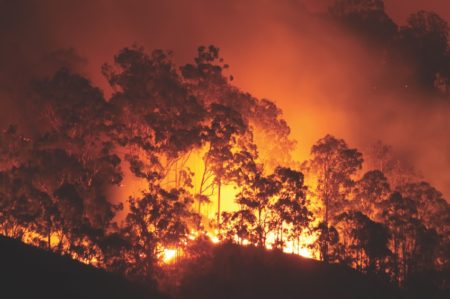How do forest fires form and spread?
Forest fires burn over 4 million acres of land per year, with an average of 106,400 fires taking place. These can move up to speeds of 14 miles per hour. But what factor permits these fires to occur? Well, four out of five are man made. However, without the intervention of nature this devastation would not occur.

The Amazon rainforest in Brazil is currently burning at an alarming rate: 80,000 fires since the beginning of 2019
Weather conditions such as draught and dry weather prompt green vegetation to convert into bone-dry, flammable fuel – including trees, grass and bush. Strong winds and air currents are a major factor, supplying the oxygen that sustains combustion. Both man made and natural heat sources such as lightening, cigarettes and even the sun ignite the spark to light this phenomenon, referred to as the ‘fire triangle’.
Fires spread in the direction of the most abundant supply of the three elements that make up this triangle, whereas rate of combustion is limited by one of the three. Fires are presented in three types – ground, surface and crown fires. The latter is the most hazardous, as it spreads the fastest and is the most destructive – jumping from tree crown to tree crown. Man-made fires may constitute the greatest percentage, but natural fires present the greatest total area burned.
For more science and technology articles, pick up the latest copy of How It Works from all good retailers or from our website now. If you have a tablet or smartphone, you can also download the digital version onto your iOS or Android device. To make sure you never miss an issue of How It Works magazine, subscribe today!





